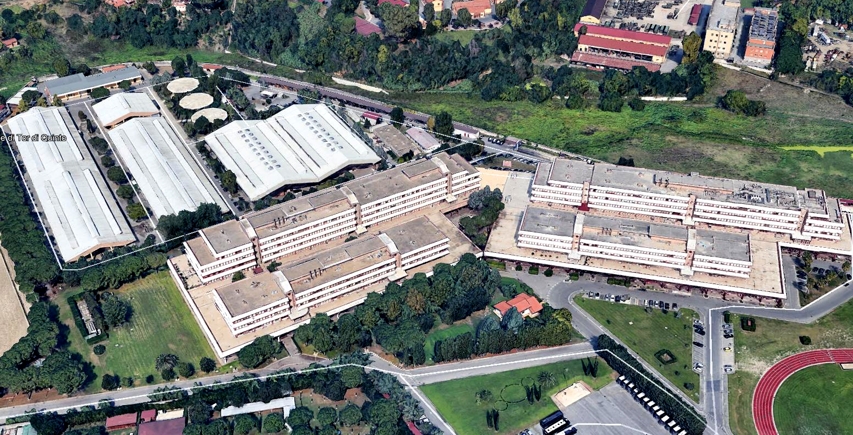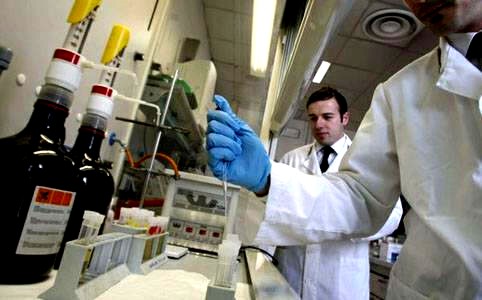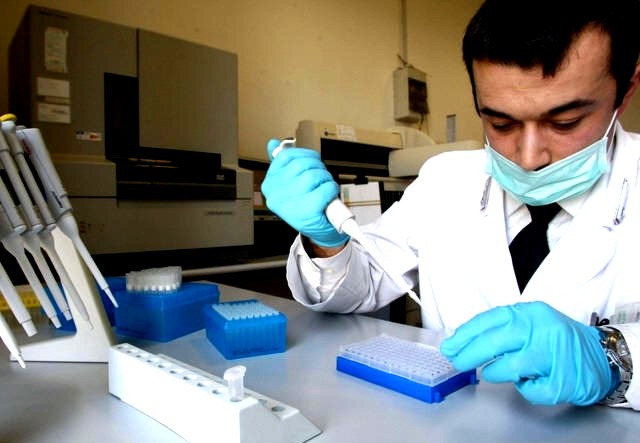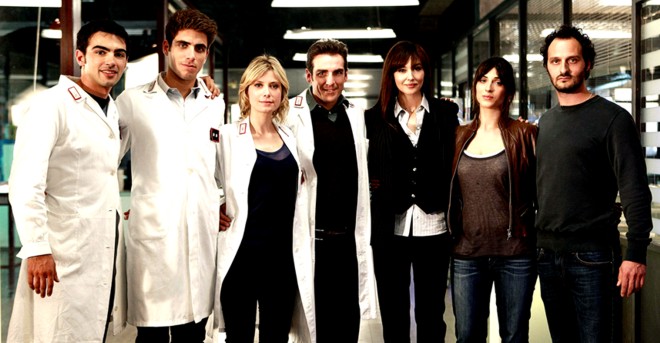
Headsup: Disney's Hulu - mafia tool?! First warning already sent to the Knox series production team about the hoaxes and mafia connections. The Daily Beast's badly duped Grace Harrington calls it "the true story of Knox’s wrongful conviction of the murder of her roommate". Harrington should google "rocco sollecito" for why Italians hesitate to talk freely.
Tuesday, October 22, 2013
The Meredith Case Wiki: A Highly Objective Summation Of The Case From Original Docs And Transcripts
Posted by James Raper
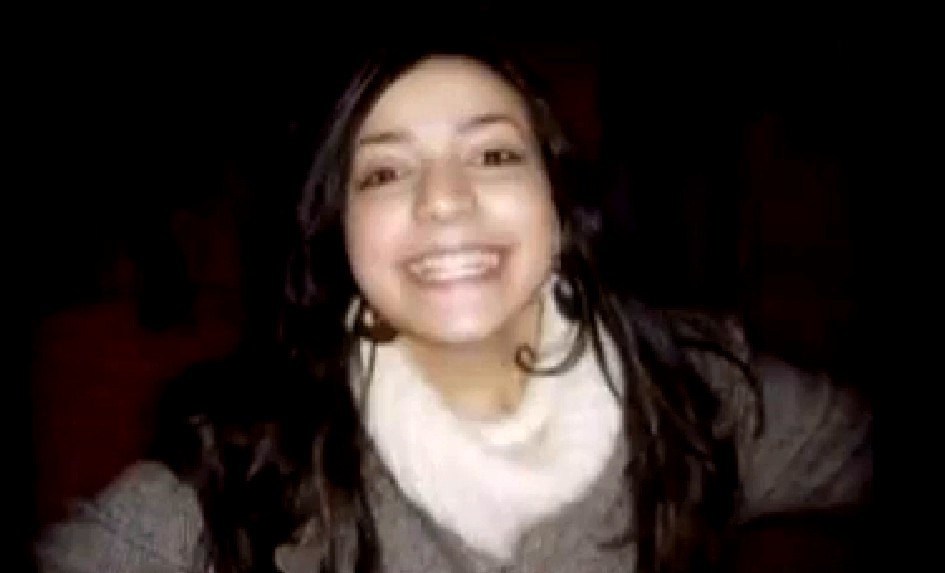
Some of our readers may not have noticed the new link to The Meredith Case Wiki to be found in the left hand column of this front page. I had not noticed it myself until recently.
This is an important link to a new website that is now a vital additional resource for those interested in understanding this case.
The website - The Murder of Meredith Kercher - is run by Edward McCall, with the assistance of other contributors, and TJMK is pleased to acknowledge and promote its distinctive and concise approach to presenting the facts of the case.
The site is modelled on the format of a page from the Wikipedia free encyclopedia. As with a Wiki page it is easily navigable. The data presented under the various headings is the consequence of much research but it still remains a work in progress. Wherever possible the material used is referenced in footnotes.
It starts on the Main page with a Mission Statement and an Introduction to the case. It then considers the evidence and has a good section entitled Myths Debunked.
The reader can easily access significant court documents: the Massei Report, the Hellmann Report, the Galati Appeal and the Supreme Court of Cassation Motivations Report. There is an accessibly summary of the Matteini and Micheli Reports.
In particular, for the researcher, there is a most welcome section entitled Court Transcripts. Here can be found transcripts of witness testimony from the Massei and Hellmann trials, experts reports, and the various writings and testimony of Amanda Knox, Raffaele Sollecito and Rudy Guede. At least that is to be the hope ultimately as there exist a good number of gaps at present.
Already some of the witness statements have been translated from Italian to English but there are a number of transcripts still to be translated. If there are any translators who would wish to help, please contact us and we shall be pleased to put your name forward.
McCall wishes to acknowledge the massive contribution made by True Justice for Meredith Kercher. TJMK has perforce grown organically and exponentially over the years and has accumulated a breadth and wealth of data, in-depth analysis and informed comment on the case which is unsurpassed on the internet, or indeed anywhere.
It will continue to do so and report developments until the conclusion of all aspects of the case.
Sunday, October 20, 2013
Given The Abundant Facts, What Scenario Is The Nencini Court Considering? Probably Not Unlike This
Posted by Marcello

1. The “Innocence/Framing” Campaign
It is rather sad that this case, of the violent murder of Meredith Kercher, has seen a ‘hurricane’ of noise trying to cherry-pick and disprove the more salient facts, and worse, discredit those who investigated, prosecuted and ruled on the case as well as discredit those who continue to emphasize the facts.
Over the past six years there has been a concerted effort by the defendants in this case, and primarily by their families, their “˜groupies’ and their legal consultants, to mount and continue a public relations campaign to frame the defendants as innocent of the crime of murdering Meredith Kercher. This ‘innocence’ campaign has even gone so far as to tarnish the motives of the fine justice officials involved.
The defendants themselves have continuously obfuscated and lied about the more salient facts, albeit inconsistently (their multiple versions fail to match up, and do not match the available facts). Lately Ms. Knox has done a number of (typically unconvincing) interviews, and her parents still seem too intent on defending the fantasy of their daughter’s innocence, all evidence to the contrary.
Mr. Sollecito, for his part, tweets unofficial retractions about statements he made in court. Both have distastefully profited through books that are not much more than a compilation of lies (and which do not offer matching alibis). Meanwhile the legal teams for the defendants have recently leaked “˜favorable’ results from the testing of a new sample on the presumed murder weapon in order to (again) misconstrue the evidence for the general public.
2. Media Misreporting Facilitates
Perhaps the most unfortunate aspect of this “˜innocence campaign’ has been that far too many journalists have dishonored their professional ethics by failing to do the proper research and objectively report the facts. Journalists to this day continue to misreport the facts, leave out corroborating facts, or worse, blindly repeat the distortions or lies promoted by the campaign without proper fact-checking. By and large, journalists (mostly in the US and UK) have ‘anti-reported’ the case.
This is especially grievous given that there are multiple Court Motivations reports (a unique feature to the Italian justice system) readily available in Italian and English online, in searchable PDF format, as well as several websites like this one that have painstakingly sought to illuminate the vast amount of evidentiary facts.
Those journalists who have failed to correctly report the case, and those involved in this ‘innocence’ campaign, have repeatedly disrespected the victim, Meredith Kercher, and her family. By contrast, the Kerchers has shown great dignity throughout these years, remaining patiently quiet and consistently insisting that the truth be revealed by the Italian justice system.
The endless journalistic failures, and particularly the ‘innocence’ campaign, have also disrespected the Italian law enforcement and judicial systems. By contrast Italian law enforcement has demonstrated substantial deference to the defendants, especially when compared to the law enforcement and judicial procedures of other advanced countries. In response, numerous ‘groupies’ have exhibited pathetic jingoism by repeatedly denigrating a country of 60 million people based on rather uninformed attitudes.
And it is very likely that Ms. Knox and Mr. Sollecito, rather than confess the truth, will continue to obfuscate or lie as much as they can, as well as disrespect the Italian Court and the Kerchers by not being present at the appeal. Their ‘innocence’ campaigns will likely continue to distort or ignore the facts. And worse, journalists and talking-head ‘experts’ will continue to report falsehoods and misrepresentations.
3. All Will Now Be To No Avail
Fortunately, none of the fabrications, ill-conceived scenarios or numerous pieces of unprofessional, sloppy journalism will ultimately matter.
This is because the Nencini Appeals Court will not be listening to any of the noise. The Appeals Court has a very specific program to follow, mandated by the Italian Supreme Court, which has already looked at this case four times (the detainment requests for Knox and Sollecito, the conviction of Rudy Guede and the annulment of the Hellmann Appeals Court ruling). The Nencini Appeals Court program includes:
- 1) looking at all the case evidence noted in Judge Massei Trial Court’s Motivations report,
2) considering the Italian Supreme Court’s Motivations report for the conviction of Rudy Guede, in which Guede was convicted of having a role in Ms. Kercher’s murder, but not the key role of fatally stabbing her, and that he acted in concert with others, and
3) considering Ms. Knox’s voluntary “˜gift’ statement of November 6, 2007, in which she placed herself at the scene of the crime. (This statement follows an earlier verbal and written statement released to the police during a few hours of interrogation in the early hours of November 6th.)
4. Big Surfeit Of Evidence
The amount of evidentiary facts the Nencini Appeals Court will have absorbed is substantial. Unlike the Hellmann Appeals Court, they cannot cherry-pick the facts. Per the Supreme Court, they must consider all the available evidence as a whole, logically tied together like a mosaic. Significantly, one could even leave out the knife and bra clasp entirely as evidence points because:
- 1) Ms. Kercher was murdered by more than one assailant. This is evident from the wounds she suffered, from the evidence in general and has been consistently maintained by three different trial judges and four different Supreme Court reports.
2) Guede in all his various confessions has consistently hinted and ultimately confirmed the presence of Knox and Sollecito during the crime.
3) There is no plausible scenario for the crime that involves Guede and two or more unknown assailants.
4) All the other evidence found at the crime scene points to Sollecito and Knox being present before, during and after the crime in some fashion.
5) Knox was at the scene of the crime by her own written admission.
6) The break-in was staged and, by obvious implication, only Knox and Sollecito would have any interest in staging the break-in (see my earlier post listing all the problems with the break-in scenario).
There seems no rational way that the Nencini Appeals Court can logically acquit. And Judge Nencini has not ‘pre-announced’ a non-guilty verdict like Judge Hellmann did by claiming that the defendants “˜appear to be innocent’.
The only remaining questions are what kind of dynamics will the Nencini Appeals Court assign to the participants, and what kind of reasoning will the Italian Supreme Court provide, assuming Knox or Sollecito appeal to the Supreme Court.
Having already read the Massei Motivations report and supporting documentation for weeks, this will already be a highly informed judges’ panel. What scenario are they converging on? The following scenario is based on some of the most significant evidence, and overall seems largely unshakable.
5. Scenario Accounting For The Most Points
The Night Before: Halloween
1) Guede lied about meeting Ms. Kercher on Halloween. (No such meeting was corroborated by witnesses.)
2) Guede lied about his whereabouts in the early evening of November 1, 2007. (His claims of having appointments with friends were not corroborated.)
Evening Prior To Attack
3) Around 8:00 PM on November 1st, Knox left Sollecito’s place to go to work. She received Lumumba’s (her boss) text message around 8:15 PM that she was not needed at work. She responded at 8:35 PM while presumably walking back to Sollecito’s apartment. Then she turned off her phone at 8:35 PM. She was seen at Sollecito’s apartment by 8:40PM.
4) Sollecito received a call from his dad at 8:42 PM. (According to the defendant, they discussed the broken trap in the kitchen sink and how to clean the kitchen floor, and about going to Gubbio with Knox the next day. Significant about this is that the broken trap and clean-up likely happened later. See below.)
5) Sollecito turned off his cellphone at roughly 8:45 PM. (typically, neither Knox or Sollecito turned off their cellphones for the night)
6) Ms. Kercher was last seen by her friend Sophie Purton at roughly 9:00 PM going to her cottage.
7) There was no human interaction with Sollecito’s computer after 9:10 PM.
8) Knox and Sollecito were seen at piazza Grimana, by the cottage, at roughly 9:30 to 10:00 PM, by a homeless man who “˜resided’ at piazza Grimana.
9) Ms. Kercher’s phone made three short calls between 10:00 and 10:15 PM roughly, to check voicemail, a possible attempt to call a bank, and possibly an MMS message.
10) A car broke down near the gate of the cottage at 10:30 PM.
11) Knox and Sollecito were seen at piazza Grimana, by the cottage, at roughly 11:00 PM, again by the same homeless man. He noted they went several times to the railing of the piazza to look down beyond it. (The piazza overlooks the gate of the cottage.)
12) A tow truck came at approximately 11:00 PM to tow the car. The driver of the truck noted a dark-colored car parked in front of the gate of the cottage, which he noted was slightly open. At approximately 11:15 PM the tow truck left and the family in the broken down car departed the area with other friends in a second car. (Sollecito had a dark colored Audi.) No screams were heard and no one noticed Guede, Sollecito or Knox pass through the gate.
13) Sollecito’s dad sent Sollecito an SMS at 11:15PM. The message was not received by Sollecito’s cellphone until roughly 6:00 AM following morning.
The Attack Upon Meredith
14) Knox likely let Sollecito and Guede into the cottage after 11:15 PM, after the tow truck and car had left. Guede went to use the large bathroom and failed to flush his feces. The following is an assumed sequence:
15) Ms. Kercher was restrained in her room and her screams were muffled. (There was bruising on Ms. Kercher’s nose, mouth, lips and chin, suggesting her mouth was covered by one or more persons; only one scream was ever heard from the cottage; Ms. Kercher was familiar with martial arts maneuvers and likely vigorously tried to defend herself)
16) Ms. Kercher was choked and her head likely banged against the wall. (Bruises on Ms. Kercher’s neck suggest she was choked with small hands; Ms. Kercher had bruises to her scalp.)
17) Ms. Kercher’s jeans may have been partially removed to restrain her legs and feet. (There were few bruises to Ms. Kerchers legs and feet, including no signs of ligature. This suggests her legs were immobilized in some other fashion.)
18) Guede held Ms. Kercher’s left wrist, leaving DNA traces on Ms. Kercher’s sweatshirt.
19) Guede likely held Ms. Kercher’s left thigh, brusing it, and left his DNA traces inside her.
20) Ms. Kercher’s sweatshirt was removed and two layers of shirts she had on were rolled up to her neck.
21) Guede left DNA traces on Ms. Kercher’s bra.
22) At least three different types of shoe prints were left on the floor in Ms. Kercher’s room on postcards, papers and the pillowcase. None of these matched Ms. Kercher’s shoes found in her room.
23) A witness heard a man and woman yelling from the direction of the cottage.
24) Ms. Kercher was pricked and stabbed with a small knife in the right side of her neck.
25) Ms. Kercher likely freed her right hand and sustained small cuts. She may have punched Knox in the nose or mouth.
26) Ms. Kercher likely freed her left hand and sustained small cuts. She may have grabbed Knox’s hair, while perhaps ripping off an earring from Knox. (Crime scene photos show blonde hair strands in Ms. Kercher’s left hand)
27) Ms. Kercher was able to scream at the top of her lungs. Two witnesses heard the scream. One witness believed it was around 11:30 PM when she heard it.
28) Ms. Kercher was pricked on her neck and chin with a knife. She was stabbed on the left side of her neck with a large knife. Her neck was roughly 16” off the floor, as suggested by a blood spray pattern on the wardrobe door close to where she was found.
29) A bloody shoeprint fitting Knox’s shoe size was left on the pillowcase. Shoeprints matching Guede’s shoes were also found on the pillowcase.
Right After The Attack
30) Guede may have gone to the bathroom to get two towels to staunch the blood. Guede confessed to this, though no DNA traces of his are found on the towels. Guede’s bloody shoeprints were found around Ms. Kercher’s body, and his bloody hand print was found on the pillow.
31) At this point, Knox may have gone to the small bathroom to check a wound. Knox left traces of her blood mixed with Ms. Kercher’s blood in the bidet, edge of the sink and Q-tip box in the small bathroom. Knox left an additional blood trace on the faucet.
32) Guede handled Ms. Kercher’s purse, leaving DNA traces of himself and Ms. Kercher, likely with Ms. Kercher’s blood. (Traces of Guede’s DNA was found on the zipper of the purse. Because the trace contains blood it was likely left after Ms. Kercher started bleeding.)
33) Guede left bloody shoeprints leading straight down the corridor and out of the cottage.
34) A witness heard someone running on the metal stair of the car park shortly after she heard the scream.
35) The same witness also heard running footsteps on the cottage pebble driveway at roughly the same time.
36) The boyfriend of another witness was bumped into by someone “˜with dark skin’ running up the stone stairs, though the time is unclear.
37) Another witness heard people running in the street that wraps behind the car park.
38) Sollecito likely tossed Ms. Kercher’s cellphones from his car into a nearby garden 1 km away from the cottage at around midnight.
39) Guede was seen at the Domus night club around 2 AM.
Evidence, Manipulated Or Overlooked
Likely sometime later during the night Sollecito and Knox returned to the cottage to eliminate evidence and frame Guede for the crime. In so doing:
40) Sollecito left a partial bloody footprint on the bathmat.
41) Sollecito left his DNA on Ms. Kercher’s bra clasp after removing the bra. (Given blood patterns on the bra, the bra may have been removed after Ms. Kercher had died and certainly after she had been stabbed on the left side)
42) Sollecito left one, possibly two, bloody footprints in the corridor.
43) Knox left two bloody footprints in the corridor. One of these contained her blood as well as Ms. Kercher’s blood. (Knox likely bled during or after the assault and may have stepped in her own blood)
44) Knox left a trace of her blood mixed with Ms. Kercher’s blood on the floor in Romanelli’s room.
45) Knox likely threw Romanelli’s clothes on the floor. She likely used an inordinately large rock to break the window with the outer shutters closed. She likely placed some of the broken glass on the window sill to fake a break-in. (Romanelli and the Postal Police found glass on top of Romanelli’s clothes and laptop, suggesting the room was ransacked and then the window was broken.)
46) Knox, perhaps inadvertently, left a piece of window glass in Ms. Kercher’s room.
47) Knox left a bloody footprint in her room.
48) Knox likely left her only room lamp in Ms. Kercher’s room by accident. (The lamp was found on the floor, by Ms. Kercher’s bed, and it may have been used to exam the bloodied floor around Ms. Kercher’s body to remove evidence, such as perhaps an earring and/or hair.)
49) Knox likely wiped away all her fingerprints throughout the entire house (While a number of fingerprints were found in the cottage and verified belonging to the three other flatmates, no fingerprints were found that could be matched to Knox, not in her room or elsewhere- except for one, on a glass in the kitchen.)
50) Knox and/or Sollecito repositioned Ms. Kercher’s body and covered it with the duvet. (Crime scene photos show from the streaks of blood that Ms. Kercher’s body was moved. There were masses of long hair mixed with blood on the floor, suggesting someone had yanked Ms. Kercher by her hair.)
51) They likely took Ms. Kercher’s wallet, closed her bedroom door and locked it.
Back At Sollecito’s Place
52) Sollecito and Knox returned to Sollecito’s place to clean up. They brought back the large knife and cleaned it with steel wool, and also tried to scrape away build-up/rust by the handle. (The knife was found at Sollecito’s place, with DNA traces of Knox on the handle and by the handle/blade joint, with a DNA trace of Ms. Kercher on the blade, with scratches on the blade and pockets of cleaned stainless steel by the handle.)
53) Sollecito likely disconnected the trap of his kitchen sink, perhaps to clean it. (The trap pipe was found disconnected.)
54) Sollecito and Knox likely used bleach to clean the floor of any blood. (Police observed a strong smell of bleach when entering Sollecito’s apartment.)
55) Sollecito and Knox apparently took a shower. (Knox has recounted a number of “˜ear cleaning’ and ‘shower’ stories.)
56) Sollecito likely put blood stained clothes and shoes into one or more garbage bags and drove in the night to dump them somewhere.
57) Sollecito used his computer at around 5:30 AM and turned on his cellphone at around 6AM.
Events On The Next Morning
58) Knox was seen at a nearby store at around 7:45 AM, just as the store was opening. She was noticed going to the cleaning products section, wearing clothes that were ultimately found on her bed at the cottage.
59) Knox may have traveled back and forth from the cottage with a mop and/or garbage bags. (In her different versions, both verbal and written, she talks about ‘having to fetch a mop from the cottage’.)
60) Knox turned on her cellphone around noon.
The Police At The House
61) Knox and Sollecito were discovered at the cottage by the Postal Police at around 12:30 PM.
62) Knox told the Postal Police that Ms. Kercher sometimes kept her door closed. (This was later contradicted by Romanelli, who insisted Ms. Kercher’s door be broken down.)
63) Knox called her mother in a panic at roughly 12:45 PM. Knox would later forget this phone call in her testimony and in her book.
64) Sollecito called the Carabinieri at around 12:50 PM, confirming nothing was stolen in Romanelli’s room, though he could not have possibly known this for certain.
65) When Ms. Kercher’s door was broken down, at around 1:15 PM, Sollecito and Knox were not with the group that broke the door down, and were not able to see inside the room.
66) Knox panicked when it seemed that Guede’s feces had been flushed by accident.
Later That Same Day
67) At the police station, Knox yelled out that Ms. Kercher “˜bled to death’.
68) At the police station, Knox inveighed against “˜those bastards’ after being fingerprinted, though it’s unclear whether she meant some other killers (and if so, why the plural), or the police.
One Day Later
69) On November 3, 2007, Sollecito lied to a reporter about how the discovery of Ms. Kercher’s body happened, recounting that Knox was the first to discover the body, and that he ‘saw blood everywhere’ even though he could not have seen into the room.
Two Days Later
70) On November 4, 2007, Knox emailed a narrative of the events from her point of view.
71) During the autopsy of November 4th, the prosecutor was convinced by the number and manner of the injuries on Ms. Kercher’s body that there had to be more than one assailant.
72) On November 4, 2007, Knox broke down when police showed her and the other roommates the knives in the silverware drawer at her cottage, to determine if any knives were missing. Knox had to be escorted outside to calm down.
73) Knox would later confess to her parents her concern about the knife at Sollecito’s apartment.
Three Days Later
74) On November 5, 2007, Sollecito failed to back up Knox and changed his alibi when confronted with cellphone records. He maintained Knox left his apartment from roughly 9:00 PM to 1:00 AM.
Four Days Later
75) On November 6, 2007, following Sollecito’s interrogation, Knox blamed Lumumba for the murder, first verbally, then in one written statement, then in a second statement that she offered voluntarily without coercion.
76) Knox failed to make an official retraction of her blaming Lumumba for the murder.
And Subsequentially
77) When first contacted by his friend via Skype, Guede spoke of a man with a knife who was shorter than he, and who had chestnut colored hair (like Sollecito). He also thought Knox was arguing with Ms. Kercher.
78) When Guede was arrested, Sollecito was concerned that Guede might say strange things about him. (If Sollecito was innocent, why be concerned about Guede?)
79) In their multiple “˜confessions’, both Knox and Guede cite Ms. Kercher’s “˜terrible screams’.
80) In court, as a response for finding Ms. Kercher’s DNA on the knife, Sollecito made up a story of pricking Ms. Kercher’s hand while cooking and subsequently apologizing to her about it. But Ms. Kercher had never been to his apartment. Sollecito recently retracted this story on Twitter.
81) Guede eventually confirmed that Sollecito and Knox were with him on the night of the murder.
Some Further Considerations
Ms. Kercher was not promiscuous and had scruples about watering the marijuana plants of the boys residing on the ground floor of the cottage. She had never expressed any interest in Guede to any of her closest friends. Similarly, Guede had never expressed any interest to any of his friends or acquaintances regarding Ms. Kercher.
Some 40+ wounds were found on Ms Kercher’s body. Despite being physically active and knowing martial arts maneuvers, she had few defensive wounds, mostly on the right hand.
She had bruising on her back, her left thigh, lower right leg, both elbows and wrists, the neck, the nose and mouth. She had two significant stab wounds of differing size on opposite sides of the neck, as well as various cuts on face, neck, hands.
No ligature marks were found on her ankles or wrists. She was therefore assaulted by multiple attackers. And as the evidence and trial reports have repeatedly indicated, the attackers were Knox, Sollecito and Guede, with Guede not responsible for the fatal wound.
Thursday, October 17, 2013
When You Get In A Deeeep Hole, Best To Stop Digging: Did Anyone Think To Tell Knox?
Posted by James Higham

[Florence courts in winter; how they might look when the appeal verdict comes down]
Not sure the Knox machine quite understands what trouble their charge is in.
She’s already done three years for calumny and is at it again. Her recent slurs on Italian courts and the police have brought further litigation down on her head.
Then there is the little matter of the court award to Patrick Lumumba for false accusation of murder, which she has not paid to this day, despite earning huge amounts from her fiction work published in America. Every one of us knows what happens when we default.
See how this stands up as her reason not to pay up:
I have already appealed to him to tell him that I didn’t go to the Police Headquarters with the aim of accusing him of a murder he did not commit. What was dragged out of me was dragged out from me without my wanting to harm him.
I only wanted to help and I was completely confused so that I didn’t know what was true and what was not true at that point. Therefore I didn’t want to harm him. I “¦ (MAXI-SIGH) “¦ His.. His name came out only because my mobile phone was there and we exchanged some SMS.
She says: “Vorrei che lui [Patrick]può capire in che situazione io mio trovavo.” I’d like him to understand the situation I’m in. Pardon? A man wrongfully banged-up in prison and owed $80 000 by her should understand the situation she is in?
She was asked what happened and answered, “My best truth is “¦” My best truth? She invented an entire situation with Mignini which simply did not happen according to eyewitnesses, including her translator. Simply did not occur that way. She volunteered a statement but in the light of subsequent events weeks later, changes that, upon advice, to her being browbeaten.
Hence the calumny charges.
Main poster Stilicho adds:
Knox can’t even be honest about her time in prison. She was not in prison because she was wrongly convicted for murder but because of the calunnia she committed against Patrick and as a precaution against her fleeing the country or killing someone else before her trial was completed. She sang and danced and was frequently visited by politicians and other dignitaries. By all accounts, it was the most productive time in her life.
When confronted with her lies, she says, “I was confused.” Sorry ““ courts don’t buy such things. They deal in truth or non-truth. None of this “it seemed to me”. She interprets this real-world reaction as hurtful, hateful to Amanda.
In short, she appears to be emotionally or socially retarded, not fully understanding what she has got herself into. Should she be released on a technicality, as Casey Anthony was, she still faces years inside because of the libel and slander which is piling up. Her own people are also being litigated. Peter Quennell:
We don’t see any sign that David Marriott or Robert Barnett or Ted Simon have the slightest clue about Italian law. They are all liable too for the felonies in the book and all of them could be charged too by the Bergamo judge.
Her advisors need to shut her up before she makes it any worse for herself. In that accusation of Lumumba, she said she was there, in the next room with her hands over her ears because she couldn’t bear Meredith’s screams. It was a clear description, clear enough for the police to arrest Lumumba and put him in prison. The screams coincided with those the neighbours reported.
If one was to substitute Guede and Sollecito, whose bloodied footprint was on the bathmat, for Lumumba, that might be close to the truth of what happened, it would explain no DNA found of hers in the actual room..
Except that there are multiple mixed blood traces and her DNA twice now on the murder weapon, along with her panicked reaction when the cutlery drawer was opened, plus her words to her mother that they’d found a knife and that she was very worried about it. Why would she need to worry if she wasn’t there?
She might be able to explain away the pattern of where her DNA was found on the knife ““ a stabbing grip near the blade ““ as a weird way of cutting vegetables. Then there was Sollecito’s admission over Meredith’s DNA in the scratch as an accident when he pricked Meredith in the hand whilst cooking at his place.
Except Meredith had never been to his place. And he still maintains that Knox was not with him that evening at his own home.
So, despite the sweeping statements by her minders of “no evidence”, which are then syndicated all over the world by their media entourage, inc the Wail, there’s actually copious evidence. After you get past the conflicting stories, the cellphone activity and the witness identifications, there is still the matter of the mixed blood traces.
There was no blood the night before, by Knox’s own admission. Meredith was out that early evening, the two had not been together. These are the sorts of minor anomalies she can only explain with “it seemed to me” or “I imagined”.
Then there is the little matter of the hand marks on the neck, too small for the men although there were other marks too.
The horror for Amanda Knox, in her infantilized state ““ look at her handwriting ““ is that she cannot see consequences, not unlike a child. She doesn’t understand that you can’t go killing someone and get away with it. She’s constantly on about being seen as a good person, as every child and every adult would like and so many of us do not see it that way.
Like a child, she just wants it all to go away and that childlike appearance is what strongly drags in most people’s sympathy ““ here is a State and nasty people worldwide being cruel and mean to a young innocent. Yet she’s getting on for 30 now and is no child. And she still spreads the libel with no thought of consequences, just as she saw no consequences on that night, just the there and then.
The role of drugs cannot be downplayed in this effect on her mind. She’s almost a poster girl for today’s youth and the early sex and drugs, with the dumbing-down at school at the same time.
She’s a mess and it’s hard not to sympathize with that and want help for her “¦ except for one pesky problem. She’s a convicted murderess.
The reaction to these posts will be sympathy for her and anger at the bully who is writing it. It should actually be disgust at what she did and neutrality towards the reporter writing the post. How does it shift from one to the other?
Natural chivalry. Yet in this sympathy for her, there is still the question of her victim choking on her blood once the screams had stopped. And that is what maintains our interest in the case ““ it is unresolved as yet, it is close to the end.
She might get off on a technicality if her lawyers are good enough. She’ll then go into that limbo state of Casey Anthony and all the other broken children of today, the blame for which many of us lay at the door of Them and their narrative.
For sure there is a sadness to it, which a new commenter, David Berlin mentions:
Knox is a hamster on a wheel, in a cage, endlessly condemned to repeating the same nonsense. In an earlier post I saw her as a character in Beckett’s “˜Play’ and the more she opines the more apt that seems. Endlessly repeating a story, fixed in her lines, unable to find an exit.
Commenter Goodlife writes:
Her life now does not seem all that different from her days in prison in that most aspects of her life seem to be under the control of someone else. But does anyone believe that she is any happier or more content now? She is now nothing more than a performing monkey, dishing out the script given to her by her supposed nearest and dearest.
An Italian commented: “Young Italian actors should learn from Amanda Knox. She is a great actress.”
She’d stare at that comment in horror. She uses the term bambina for herself, rather than ragazza, sheltering within this childlike status. At 20. At nearer 30 she is still doing it. She said in an interview that she was la più piccola [the littlest] instead of la più giovane [the youngest]. Littlest evokes more sympathy.
She’s in a prison of her mother’s and her estranged father’s making.
She’s caught up in an international horror story and she’s the leading player. This will always garner sympathy.
She asks why everyone hates her. They don’t hate her ““ that’s child talk. They are appalled by the machine she has behind her and their antics and believe she should take responsibility and start paying off the debt to the dead girl.
Meredith by name.
Wednesday, October 16, 2013
Amanda Knox Risks Penalties For Felony Claims No Different From What Already Cost Her 3 Years
Posted by Peter Quennell
Here is the Amanda Knox Skype interview transcribed for us from the video in Italy. The interviewer is mushy (too much so) and really distorts key facts, and so does Knox. You can see her claim she was framed. Her denials are without substance and seem mechanical and half-hearted. Time for Plan B?
A common question on forums today is “Can Amanda Knox make these very public false charges and suffer no penalty?”
The short answer seems to be no. First, she has made the possibility of early arrest to put a stop to that more likely. If Judge Nencini saw the Porta a Porta TV program last night he will be giving thought to his options. Negotiating on arrest is ruled out by law
And second, for the dozens of false charges in her book and numerous TV and print interviews, she could be facing some more time in prison quite regardless of how the Nencini appeal works out for her. And a guilty verdict there could cost her 30 years and damages.
One thing nobody thought to point out on the rudderless and badly informed Porta a Porta show last night is that Knox is already being investigated for identical false charges.
EVERYTHING she says now is added to that “treasure trove” of actionable accusations. Penalties for these felonies vary; but if one has a prior conviction, some prison time is almost inevitable.
Sorely missing from the Porta a Porta panel last night was their usual magistrate, Simonetta Matone, who has always raised tough questions. Was there a deal not to have her present on what was a distinctly tilted panel?
Knox seems to have committed at least one felony in her book with the pages-long accusation that the investigating prosecutor Dr Mignini was not only present at her interrogation (he wasn’t) but leaning on her to frame Patrick (not being there, of course he didn’t.).
Why didn’t anyone on Porta a Porta introduce that false accusation last night, which was widely reported in the Italian media after her book came out? Or mention her lamp behind Meredith’s door lacking fingerprints, or the mixed-blood traces outside Meredith’s door which seem to strongly relate to what the Carabinieri labs in Rome are now investigating?
Even the defense lawyers are seeing culpability growing, as they are given full credit for helping to write the defamatory books. They all made themselves scarce last night, did anyone notice that?
Do you ever wonder why Knox or Sollecito don’t push their own lawyers forward to take on this challenge?
Below: Pro-prosecution Magistrate Simonetta Matone suspiciously absent last night]

Monday, October 14, 2013
Carabineri Labs Might Prove Fourth And Conclusive Scenario For The Mixed DNA Samples In The House
Posted by Peter Quennell
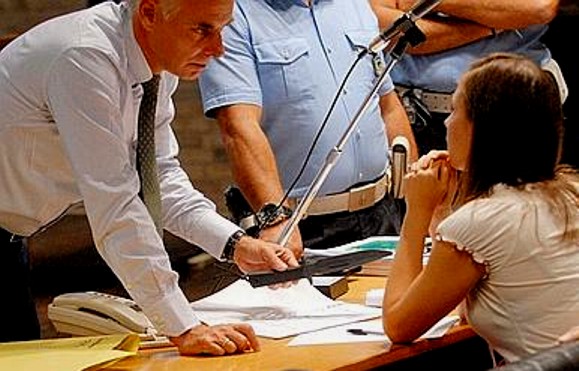
Lab work is believed to have continued today in the absence of the defense observers, and will continue on and off through to October 30th.
The defense observers may not have a further role at the laboratory. Most or all of the analysis leading to firm attributions of the DNA will be done by the Carabinieri team electronically.
It is that final attribution that the defenses are widely rumored to be so terrified of. That Knox’s DNA is there seems a given. The cliffhanger is whether Meredith’s DNA is there also.
Another possible mixed trace. If so it would be the sixth one.
Judge Massei did not arrive at a full scenario for how the five mixed blood traces at the crime scene could have been created. He described what was found by crime scene investigators and moved on.
After the 2009 Massei trial some further analysis was conducted.
With great help from Luciano Garofano’s DNA chapter in Darkness Descending and Barbie Nadeau’s and Andrea Vogt’s excellent reporting, we posted a comprehensive update mid-2011.
The locations of the five mixed traces at the crime scene are as follows.
1. Bathroom near Meredith’s room:
- On the drain of the bidet
- On the Q-tip box located at the ledge of the sink
- On the edge of the sink
Elsewhere in the apartment:
- In a luminol-enhanced bare footprint in the hallway outside Kercher’s room
- In a luminol-enhanced spot found in Filomena Romanelli’s room
Three sources for Knox’s blood have long been suggested: some bleeding from her ear, some bleeding from a possible nosebleed, some bleeding from the open scrape on her neck. .
All three of them could theoretically have been inflicted by Meredith as she struggled with the trio to save her life. None seem to explain why there were repeated MIXED traces.
That has remained a huge puzzle. But now we are looking at a fourth scenario: that Knox cut her hand with the top end of the blade as she stabbed at Meredith’s neck.
That could explain once and for all where Amanda Knox’s blood came from AND why it was mixed with Meredith’s blood. It happened right there.
[Click for larger image. Handle as from the blade direction. Sample is apparently from gap on sharp side.]
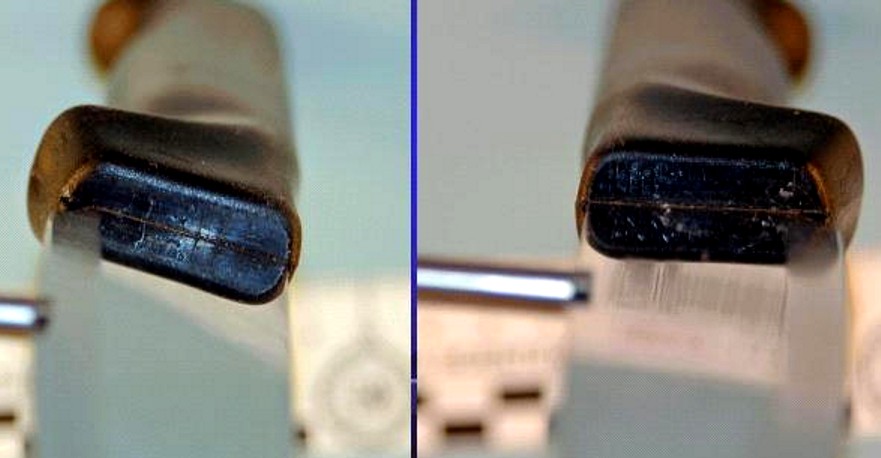
DNA Tests: Umbria24 Reporter Francesca Marruco Provides A Balanced Overview Of Possible Prospects
Posted by ziaK
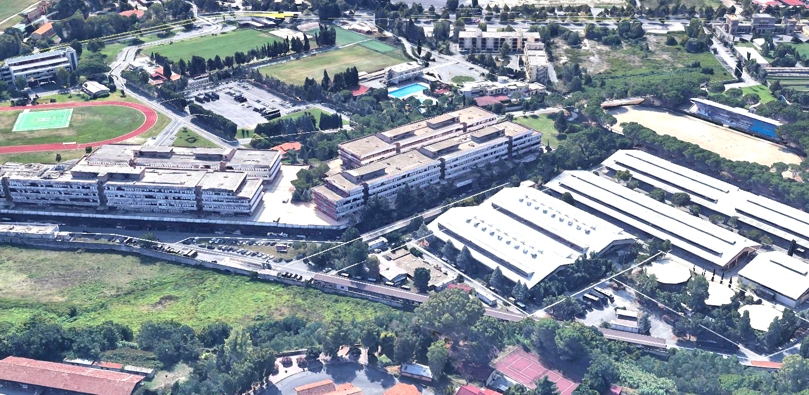
It may be that today or any day this week a definitive analysis of the seeming mixed DNA sample appears from an authoritative source.
Perugia-based Francesca Marruco did a lot of careful balanced reporting from Perugia early in the case. She has excellent official sources. She suggests in this report that the world might have to wait for the last day in October (deadline for the labs to report their analysis) or 6 November (next scheduled court session) for the official bottom line.
This is my translation. I am Italy-based also.
Kercher trial: unconfirmed reports on Amanda’s DNA: The experts will lodge their report [their truth] on the 30th [October]
By Francesca Marruco
The “I” trace identified on the blade of the knife could have come from the American woman, however the data could lend itself to contrary interpretations. The sentence could arrive before 30 November.
In order to obtain the definitive results of the analyses that the carabinieri of the RIS in Rome are carrying out on the “I” trace identified on the blade of the knife which is considered to be the weapon with which Meredith Kercher was murdered, we will have to wait until 30 October - the day on which the experts appointed by the Assise Appeal Court of Florence will lodge their conclusions. Already on Friday, the day on which the analyses were begun in the experts’ laboratories, uncomfirmed reports began to be leaked concerning the origins of that tiny quantity of DNA.
These leaks would like to ascribe it [the DNA] to Amanda Knox, the American student who was initially convicted and subsequently acquitted for the homicide of her flatmate, Meredith. But there is, as yet, neither certainty nor officiality, and - as this long case has taught us - even in the presence of officiality, opposing interpretations may be formed. If, in fact, as is being rumoured, those tiny biological particles did actually belong to Amanda Knox, this information could be interpreted in many ways.
Opposing interpretations - The defence would hasten to say that since Amanda had spent time in Raffaele Sollecito’s house - where the knife was discovered - there would be nothing strange if her DNA were to be on the blade. Just as - and this, at least, has been clearly seen - Amanda’s DNA was found on the handle of the weapon. Its presence could be explained by any banal procedure in the kitchen.
And indeed, Knox’s own defence has always maintained that the highly-contested trace “H” - the other trace identified on the blade, and which according to some is Meredith’s DNA - is nothing more than potato starch. Thus, Amanda would seemingly have left her trace on the knife while peeling potatoes.
Traces - It is very clear, however, that the Prosecution could claim that precisely that presence of Amanda’s DNA on the blade of the knife could be proof that Knox touched it. To peel potatoes, or to kill her flatmate Meredith, as the Prosecution holds? If it is confirmed, one can bet that the data [found by the RIS] will give rise to an “earthquake” and it will fall to the judges of the Florentine court to clear up the resuting debris.
On the other hand, they might decide not to consider it [the data] any more than the other elements [of evidence], since it effectively lends itself to a multiplicity of [possible] interpretations which cannot be confirmed at this point in time. Certainly, if that trace were that of the victim, Meredith Kercher, the proceedings might take a different direction, since there would then be two [traces] at that point, and not just one trace of the victim’s DNA which would have ended up on the blade of a knife which she never touched during her lifetime.
The certainties, or rather, the conclusions, of the experts will be lodged on 30 October. It is the 6th of November, however, which has been appointed for the hearing during which these results will be discussed before the Court and the parties.
Towards the verdict - Raffaele Sollecito may also be present in court on that date, as he announced via his lawyers, Giulia Bongiorno and Luca Maori. Sollecito intends to make various spontaneous declarations in order to affirm once again his non-involvement in the barbarious murder of Meredith Kercher, for which only Rudy Hermann Guede is currently in jail, with a sentence of 16 years in prison which has been confirmed[by the Supreme Court].
After the hearing in which the results of the tests entrusted to the Rome RIS will be discussed, it is very probable that the trial will travel rapidly towards sentencing - the fifth sentence pronounced by an Italian court with regard to Raffaele Sollecito and Amanda Knox. The Court President [leading judge], Alessandro Nencini, said during the first hearing that “this is a trial for matters of undeniable seriousness. Over and above the media circus, is Court’s desire to give all parties the most space possible for discussion, because there was a very significant sentence/conviction originally.”
By November - For this reason, “in order to obtain every possible factor for the matter we are trying here, the Court orders that the trace should be examined by the staff of the RIS in Rome”. The Florence Court’s sentence could thus arrive by the end of November, or at the latest by the end of the year. It is very unlikely that Amanda Knox will decide to be present at any of the hearings, and probably she will await the verdict in Seattle.
Perhaps the final word shall never be pronounced on the most Press-covered trial in Italian legal history. After this latest sentence, in fact, nothing prevents anyone from making further appeals to the Supreme Court.
Friday, October 11, 2013
The Carabinieri Laboratories In North-Central Rome Where Now Two Different Samples Need Attribution
Posted by Peter Quennell
Third update
Italy-based freelance reporter Andrea Vogt has tweeted the following: Leaks suggest DNA on knife shows knox genetic profile, but there is another profile being studied. Too early to interpret
Second update
Excellent comment on PMF by the poster Hugo which explains how the balance hasn’t changed.
The song remains the same. The republic contends that Amanda Knox used that knife to murder Meredith Kercher. The knife has yielded the DNA of just two people: Knox, in a position which indicates that she was gripping it, and Meredith, in a position which indicates that she was stabbed with it.
The defence can easily claim that Knox’s trace results from normal culinary use (although Stefanoni said the handprint indicated an atypical stabbing grip, with the knuckles on the same side as the blunt edge of the blade, and not a normal culinary cutting grip, with the knuckles on the same side as the sharp edge).
The problem is Meredith’s DNA at the sharp end. ‘Independent court-appointed expert’ Carla Vecchiotti admitted on the stand that this could not have arisen from laboratory contamination.
Professor Christopher Halkides’ suggestion that the contamination occurred during collection, because Stefano Gubbiotti acquired Meredith’s ‘aerosol DNA’ on his clothing, when he was supposedly in the house the same day, almost a week after the murder, and thus transferred the DNA from his clothing to his fingers to his evidence-handling gloves to the knife when he took it from Finzi’s envelope and re-packaged it in a stationery box at the Questura, is self-evidently absurd, fanciful, fictional and completely outwith the realms of actual forensic science.
And it’s not in evidence anyway, so it’s not an option open to the court.
Plus the objection to low copy number DNA is an American superstition not recognised in Europe. Unusually, it’s a scientific area where the US lags well behind. So you get hillbillies like Bruce Budowle grumbling, ‘Cain’t rightly say what that there newfangled LCN is, but ah reckon ah’m agin it.’ You’ll recall that a British appeal court has found that Bruce Budowle hasn’t the faintest idea what he’s talking about and also that, like Halkides, he tends to cite sources that don’t actually say what he says they say.
Knox is there on the hilt of the knife. And M is there near the point of the blade, and she’s trying to tell us something.
First update
The gap between the blade and handle of the knife was apparently widened to obtain the sample for the test. Sollecito lawyer Maori has claimed it is Amanda Knox’s. It is apparently adjacent to her previous trace.
If that is the case, the strength of the DNA evidence (which is very strong) remains unchanged. Dr Stefanoni identified Exhibit 36 on the blade as a strong trace of Merediith’s DNA. This was supported by various experts.
No contamination of that trace has ever been proved - or even a convincing contamination scenario put forward - and the video on top of the post below shows how the DNA charts for the sample and for Meredith totally match.
First post
Human DNA is widely reported in Italy to have been established from the sample never before tested on the large knife.
We may have to wait on an announcement from Judge Nencini in Florence as to whose DNA it is. That may not happen today.
These labs in the Carabinieri barracks are not far from the center of Rome. They are very well know to Italians because (images at bottom) “RIS” the Italian version of the show “CSI” is set there.
Thursday, October 10, 2013
Testing Of The DNA Sample Starts Today Though Possibly No Results Announced Before 6 November
Posted by Peter Quennell
1. ViaDellaPergola’s video
That video from 2010 illustrates how the existing positive tests described in the Massei Report were crystal-clear; subsequently Hellmann, Zanetti, Conti and Vecchiotti (all now being investigated) so muddied the water.
2. From our short-form Massei Report
This is from Part Three of the four-part abbreviation of the Massei Report done by Skeptical Bystander and a PMF team in mid-2011.
Exhibit 36: The double DNA Knife
Exhibit 36 is a 31 cm long knife with a 17 cm blade and a dark handle. It was seized from the kitchen cutlery drawer at Raffaele Sollecito’s home, located at 110 Corso Garibaldi in Perugia, on 6 November, 2007 when Chief Inspector Armando Finzi was ordered to perform a search of Sollecito’s residence. This exhibit is important because “Sample 36b” taken from a scratch on the knife blade yielded Meredith Kercher’s biological profile.
After putting on gloves and shoe coverings, Finzi and his team entered the home. They noted a strong smell of bleach. Opening the cutlery drawer, they saw a big, “extremely clean” knife. In Sollecito’s bedroom they found a second knife. The knives were bagged and sealed.[106]
Exhibit 36 was carried back to the police station, where it was placed in a box for shipping to the Polizia Scientifica in Rome. Dr. Stefanoni was the recipient of the box containing the knife in Rome. All parties testified that standard procedures were followed to avoid the risk of contamination.
On 4 November, 2007, Meredith’s roommates Filomena Romanelli, Laura Mezzetti, and Amanda Knox had been taken by the police to look at the knives in their kitchen at the apartment in Via della Pergola. Personnel from the Questura reported Amanda’s “severe and intense emotional crisis, unlike [the reaction of] the other two girls”.[292] This behavior was contrasted to Amanda’s behavior at Police headquarters two days earlier:
“This circumstance appears significant both in its own right and also when one considers that Amanda had never previously shown signs of any particular distress and emotional involvement (in the Police headquarters, on the afternoon of November 2, Meredith’s English girlfriends, Robyn Carmel and Amy Frost in particular, according to their declarations, had been surprised by the behaviour of Amanda, who did not show emotions).”[292]
Investigators’ attention was alerted to the Exhibit 36 knife because of Amanda’s inconsistent behavior. Later, police overheard a jail conversation between Knox and her parents on 17 November, when Knox said, “I am very, I am very worried about this thing with the knife ... because there is a knife of Raffaele’s ...”.[292]
Exhibit 36 thus became a central piece of trial evidence. The debate would subsequently be focused on two issues: The compatibility of the knife with the large stab wound in Meredith’s neck; and the reliability of the DNA analysis.
Considering the first of these points, although the knife blade is 17 cm long, the depth of the larger wound is just 8 cm . This “discrepancy” was the basis of defense efforts to discredit the knife as a murder weapon. The compatibility of the Exhibit 36 knife and the larger of Kercher’s wounds is addressed by Professor Bacci (see p. 121 of the Massei report). Professor Norelli maintains that “it is not said that a blade is always embedded (plunged into) the target right up to the handle; the blade may also go (in) only to a certain portion of its length, and not right up to its end”.[126]
It is noted that the movements of the victim may have played a part in determining the depth of the cuts. “If I insert a centimeter of the blade into the victim and the victim suddenly moves towards me, how much of the blade will be driven inside the body surface area is absolutely unpredictable and depends on the action of both”.[129] Alternatively, the blade of the knife might have met an obstacle. The cutting action is described on p. 146 and again starting on p. 152.
Defense witness Dr. Patumi disputed the compatibility of the wounds with said knife, arguing that a blade of 17 cm length could not have caused a cut 8 cm deep; see p. 156-157. However, the Court rejected “the thesis of the incompatibility of the most serious wound and the knife Exhibit 36”, holding this thesis to be “unacceptable” .[172]
Regarding the second point ““ that of the DNA analysis ““ Dr. Stefanoni was the responsible expert at the crime lab in Rome. Although no biological traces were visible to the naked eye on the face of knife blade, Dr. Stefanoni perceived scratches - “anomalies in the metal’ - on the blade when rotating the blade under strong lighting. The streaks were:
“... visible under good lighting by changing the angle at which the light hit the blade, since obviously the blade reflects light and thus creates shadows, making imperfections visible.”[196]
Sample 36b was taken from one of these points on the blade. The genetic profile of Meredith Kercher was identified from this sample. Stefanoni presented charts to the court, showing the DNA profile: she noted “that the peaks were a bit low, but that without doubt were still within the range that is considered useful for testing a specimen (page 108). Although of a much lower quantity of DNA, the profiles were nonetheless very present and, by making a comparison with Meredith’s profile, Dr. Torricelli reported that “šwe find all the alleles, and we find them to be equal to those obtained from the swab taken, from the sample taken from the wound. Therefore in this case too, without doubt”› -she continued- “šalthough we are confronted with a sample that contains very little DNA, it nonetheless contains the DNA of only one person and is therefore comparable to Meredith’s; with regard to this knife, I would say I have no doubt in interpreting it: specimen A with Amanda’s profile and specimen B with the profile, compatible with that of Meredith.”[231-32] However, the amount of DNA was small and it was all used up in order to run a single test.
The defense objected that it was impossible to evaluate whether the actual nature of Sample 36b specimen:
“.. when we have a small amount of DNA we talk about low copy number DNA, and that when this type of DNA is present, we are indeed able to carry out our amplification and obtain a profile, but we must remember that we may have lost one of the alleles, we may have an allelic imbalance ... it becomes very difficult to distinguish from a real allele, so that when working on ... small quantities of genetic material, it is necessary to be very cautious in interpreting the results.”[237]
To this point, Dr. Stefanoni argued that it is preferable “to know to whom a biological specimen is attributable, rather than ascertaining the nature of that specimen, without attributing it to anyone.”[288]
Furthermore, it was argued by the defense that the quantity of DNA was too low to be able to perform the tests and consider the results reliable. Given a low amount of DNA, the risk of contamination is high - particularly given the very numerous number of samples being analyzed.
The court rejected the possibility of contamination because no anomalies were ever identified in the Polizia Scientifica’s analytical process. The Prosecutor pointed out that all tests had been carried out in the presence of a lawyer/consultant for the defense - who had raised no objections during the testing. The possibility of contamination during the collection of evidence was rejected based on a detailed consideration of the collection process.
Thus, the DNA from Meredith which was found on that knife cannot be traced back to any contamination occurring in the house in which it was found, or to the method of acquisition of the knife on the part of Finzi, or even to the collection and dispatch methods used by Gubbiotti. In addition, as has been said, that such contamination could have been carried out by the laboratory is also ruled out.[266]
In addition, Dr. Stefanoni testified that she did have the biological profile of the defendants, but did not employ them while interpreting the electrophoresis diagrams. Nevertheless, the Massei report judges that:
“... the main criticisms advanced by the defense concerned precisely this very small DNA quantity, and it raised the question of the reliability of the result obtained.”[288]
To this central point, Dr. Stefanoni:
“Regarding the too low quantity of DNA, Dr. Stefanoni declared, as has been seen, that even in the case of a particularly scanty amount of material, the analysis and evaluation should be performed, and she added that, if the data that emerges is absolutely readable and interpretable and the correct laboratory practice was followed, the result is reliable and there is no reason to repeat the test.
“It does not follow ... that the data is unusable and unreliable as a consequence of a lack of repetition due to a lack of further quantities of DNA. It is necessary, instead, to take account of the data that emerges from such a specimen and to check for the ““ possible ““ presence of other elements, both circumstantial and inherent to the data itself that, despite the lack of repetition of the analysis, could allow an evaluation of the reliability of the analysis and of its outcome.”[289]
The court concluded that the biological profile that resulted from the 36B DNA analysis ...
“... gave a biological profile attributable to the person who was mortally wounded with that very knife: a result, therefore, that was entirely reasonable and consistent with the event; [it was] certainly not explainable as a mere coincidence, and it must be ruled out ““according to what has already been observed in this regard - that it could have originated from contamination or from the use of a suspect-centric method.”,[290] and that
“”¦. it should therefore be affirmed that the analysis of trace 36B, which detected the presence DNA attributable to Meredith, appears to be completely reliable.”[293]
3. TJMK posts on the latest DNA science
1. Poster Fy By Night: The Hellmann-Zanetti Appeal Court’s DNA Consultancy Looks Even Worse In Face Of The Latest Science
2. The Machine A New DNA Analysis Strongly Implicating Sollecito Seems to Have The Defense Forces Extremely Rattled
4. Sollecito tries to wind back the “pricked” claim
Our lawyer SomeAlibi recently explained how.
5. Andrea Vogt posts possible scenarios.
Scroll down to UPDATE OCT. 9, 2013 An excellent weighting of the possibilities.
The DNA could be Meredith’s, which would dramatically hurt thr defenses. It could be Rudy Guede’s, which would dramatically hurt thr defenses. Or it could be neither (or untestable) which would nt neccessarily affect the outcome. .
Tuesday, October 08, 2013
Questions For Knox and Sollecito: Why Claim Rudy Guede Did It Alone When So Much Proof Against?
Posted by Marcello
1. Problems Of Your “Guede did it alone” Mantra
Your attempts to frame Guede for the entire attack sound racist, and they fly in the face of a multitude of hard facts.
Why are you and your more untethered supporters arguing to the media that Rudy Guede alone attacked Meredith (he could not have), that he was a drifter (he wasnt), a burglar (he wasnt), and drug dealer (he wasnt), and that his DNA traces are “all over Meredith’s room” (they werent)?
There are surprisingly few DNA traces of Guede in there, and outside Meredith’s door there is only evidence of (1) his prior use of the south bathroom, and (2) his shoeprints headed straight for the front door.
There is zero evidence that Rudy Guede was ever in the shared bathroom (the one with Sollectio’s bloody footprint on the bathmat) and zero evidence he was in Filomena’s room (the one with the broken window and the mixed DNA of Meredith and Knox).
2. Evidence Against You Is Far, Far Stronger
Explain if you can about Sollecito’s bloody footprint. Explain if you can about the evidence of cleanup. Explain this and this about your multiple contradictory alibis.
Explain if you can why YOUR own witnesses Alessi and Aviello were such disasters for your side in court. Explain your cell phone actions (or non-actions) and the timing and content of your phone calls, and your computer actions (or non actions).
Explain why in Sollecito’s book he claims he sent several emails throughout the night; but there zero records of such emails with his email provider. Explain why both Sollecito and Knox framed Dr Mignini.
There are three compelling reasons above all why the Massei court and the Supreme Court will remain totally unbending on the point that Guede did NOT attack Meredith alone, and that it had to be a pack attack on Meredith.
- One is the full day of closed court testimony at trial by crime-scene experts from Rome who accounted for every point of evidence in Meredith’s room with a depiction of a 15 minute pack attack involving three people. This seriously upset the jury and your own defense was left essentially speechless.
- One is the prosecution’s video shown in closed court during Summations of the recreation of the attack on Meredith, which accounted for every point of evidence with a 15 minute pack attack involving three people. This seriously upset the jury and your own defense was left essentially speechless .
- One is that the entry of an attacker via Filomena’s room is so absolutely unbelievable. Your own defense always knew this, and barely tried to make that sale (hence the witnesses Alessi and Aviello).
There are seven other routes for a burglar to enter the house, all of them faster and quieter and five of them darker. You can see five in these images below: two via the east windows, three up onto the balcony and into the house via the louvre door or the kitchen window.
All seven routes would be obvious to any burglar, long before he walked all the way around the base of the house to beneath Filomena’s window (which he did several times in your scenario).
3. The Numerous Questions From Which You Hide
On or after 6 November you have both promised to appear in the appeal court in Florence. You are apparently too nervous to face cross-examination under oath, but you have said you intend to try to explain things.
- 1) Rudy Guede had been to the apartment at least twice already on prior occasions and knew the boys who lived in the lower story. Why did Guede choose to NOT break-in to the lower story where he knew (or could ascertain) that all four boys were away on holiday, and therefore could break-in and rummage with some certainty of not getting caught?
2) Why did Guede choose to break-in to the upper story of the villa mid-evening, when he surely knew Knox and Kercher would be staying at the villa for the holidays and could have been there or returned at any time to “catch him in-the-act”?
3) Surely Guede would have verified that no one was present by circling the cottage and checking if any lights were on in the windows? But Guede “missed” the really easy way in: the balcony in the dark at the rear, used in 2 burglaries in 2009.
4) If Guede did circle the cottage to make sure no one was there before attempting the break-in, why would he then choose the most visible and more difficult path of entry through a second story window, as opposed to the more hidden and easier path of break-in at the back of the villa, which he would have noticed while circling the villa?
5) Why would Guede choose to break-in through a second story window that was highly exposed to the headlights of passing cars on the street as well as exposed to night lighting from the carpark?
6) Ms. Romanelli testified that she had nearly closed the exterior shutters. Assuming her memory is correct, there is no way a burglar could easily verify if the windows were latched and if the inner scuri were latched to the window panes, which would make access to the window latch impractical unless one was armed with a core drill or an ax. Why would Guede, who was certainly familiar with such windows, choose to attempt the break-in through a window that he could not easily verify would allow him quick access?
7) Assuming the shutters were closed, Guede would have to climb up the wall and open the shutters before smashing the window with the rock. The night of the murder, the grass was wet from rain the previous day. Why was there no evidence of disturbed grass or mud on the walls?
8) Guede had Nike sneakers, not rock climbing shoes. How did he manage the climb up the wall with that type of footwear?
9) If the shutters were closed, or somewhat closed, how did Guede manage to lift himself up to the sill with only an inch of sill available to grab onto?
10) Assuming Guede opened the shutters, how did Guede verify if the inner scuri where not latched to the window panes, which would prevent access to the window latch? There was no light inside Ms. Romanelli’s room to reveal that the scuri were ajar.
11) Assuming Guede managed to check that the inner scuro behind the right-hand window was not latched, how did he manage to break the glass with a 9 lb rock with one hand while hanging on to the sill with the other?
12) Assuming Guede managed check that the right-hand inner scuro was not latched, how did he break the glass with the rock without having glass shards fly into his face?
13) If Guede climbed down to the lob the 9 lb rock at the window from 3 meters below, how would he do so to avoid glass shards raining down on him?
14) If Guede climbed down to the lob the rock at the window from below, why would he choose a 9 lb 20 cm wide rock to lob up to a window 3 meters above him, with little chance of striking the window in the correct fashion?
15) If Guede climbed down again and climbed back up to the carpark (up a steep slope with slippery wet grass and weeds) to lob the 9 lb 20 cm wide rock from the car park, why is there no evidence of this second climb down on the walls?
16) Why did Guede choose a 9 lb 20 cm wide rock to throw from the car park, given that a large, heavy rock would be difficult to lob with any precision? Especially considering that the width of the glass in the window pane is only 28 cm wide, surely anyone, experienced or not, would have chosen a smaller, lighter rock to throw with greater precision.
17) If Guede lobbed a 9 lb 20 cm rock from the car park, such a lob would require some velocity and therefore force. Guede would have been roughly 11-12 feet away from the window, in order for the lob to clear the wood railing at the carpark. If the rock was thrown with some velocity, why is the upper 1/2 of the glass in the window pane intact, without any fracture cracks at all?
18) If Guede lobbed a 9 lb 20 cm rock from the car park, such a lob would require some velocity and therefore force. Why is there so little damage to the scuro the rock hit, so little damage to the terrazzo flooring impacted by the rock, and so little damage to the rock itself, which surely would have fractured more on impact with a hard terrazzo floor?
19) Why was there no evidence of glass shards found in the grass below the window?
20) If Guede climbed the wall to open the shutters, climbed down and up to the car park to throw the rock, then climbed back down and up again to the window, how does he manage to hoist himself onto the sill without cutting himself on the glass that was found on the sill?
21) If Guede climbed the wall to open the shutters, hoisted himself onto the sill, tapped the glass with a 9 lb rock to lightly break the glass in a manner more consistent with how the window was broken, why did he throw the rock into the room, rather than let it fall into the grass below?
22) Why was no dirt, grass, muddy shoeprints or similar trace evidence found on the window sill?
23) Why was no dirt, grass, muddy shoeprints or similar trace evidence found in Romanelli’s room?
24) If Guede climbed the wall to open the shutters, climbed down and up to the car park to throw the rock, then climbed back down and up again to the window again, hoisted himself onto the sill without cutting himself on the glass that was found on the sill, unlatched the window and stepped inside Filomena’s room, how did he manage to get glass on top of Romanelli’s clothing that was found under the window sill?
25) Why would Guede, who would have spent a good 10 minutes trying to break and enter with the climbing up and down from the carpark, waste valuable time throwing clothes from the closet? Why not simply open the closet doors and rifle through the clothes without creating more of mess?
26) Why did he disregard Romanelli’s laptop, which was in plain view?
27) Why did Guede check the closet before checking the drawers of the nightstand, where surely more valuable objects like jewelry would be found?
28) Why were none of the other rooms disturbed during the break-in?
29) Assuming Ms. Kercher arrived to the cottage after Guede’s break-in, presumably when Guede was in the bathroom, why did she not notice the break-in, call the police and run out of the cottage?
30) Assuming Guede was in the bathroom when Ms. Kercher returned, why go to the extent of attacking Ms. Kercher in her room rather than try to sneak out the front door, or through the window he had just broken, to avoid if not identification, at least more serious criminal charges?
31) Assuming Ms. Kercher was at the cottage while Guede broke-in, why did she not call the police the moment she heard the rock crash through the glass, loudly thud to the terrazzo floor and investigate what was happening in Romanelli’s room while Guede was climbing back down from the car park and climbing back up to the window?
32) Assuming Ms. Kercher was at the cottage while Guede broke-in, Guede could have been on the sill already because he had tapped the glass with the 9 lb rock to break it. Therefore perhaps Guede was already partially inside Romanelli’s room when he was discovered by Ms. Kercher. In this case Guede follows Ms. Kercher to her room in an attempt to dissuade her from calling the police and the assault ensues. But then, if this scenario is correct, when does Guede have time to rifle through Romanelli’s clothing and effects?
33) Why is there a luminol revealed footprint in Romanelli’s room that has mixed traces of Knox’s and Kercher’s DNA ?
34) Why does this footprint not match Guede’s foot size?
35) If multiple attackers were required to restain Ms. Kercher, holding her limbs while brandishing two knives and committing sexual violence, then who else was with Guede and why no traces of this 4th (or more) person(s) were found, either in shoeprints, footprints, fingerprints, DNA or otherwise?
36) If Guede and others were involved in the assault, why has Guede not acknolwedged them, and instead consistently hinted that, and finally admitting that Sollecito and Knox were with him during the assault?
37) If Guede and others were involved in the assault, why do the other shoeprints, footprints, DNA traces and fingerprints all point to Knox and Sollecito being present during the assault, in one way or another?
4. Italy Is Not Buying The Racist Mantra
If your racist mantra remains “the black guy did it alone” and “Italians are corrupt and stupid” you need to PROVE that. If you cannot answer all of these questions above, this will deservedly cook you.
You could be facing 30 years with the “mitigating factors” canceled and the new penalties you will incur for your dishonest books and PR campaigns.
[Five easier ways in: 3 via balcony (note two drainpipes, window grid below), 2 via side windows]
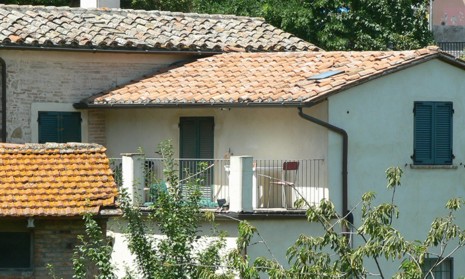
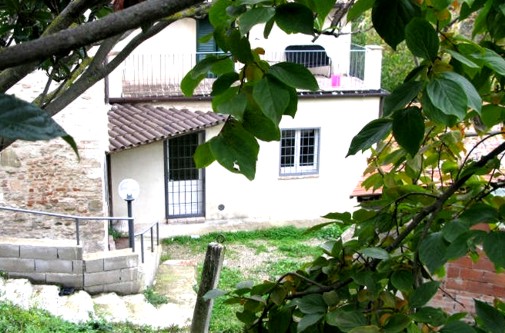
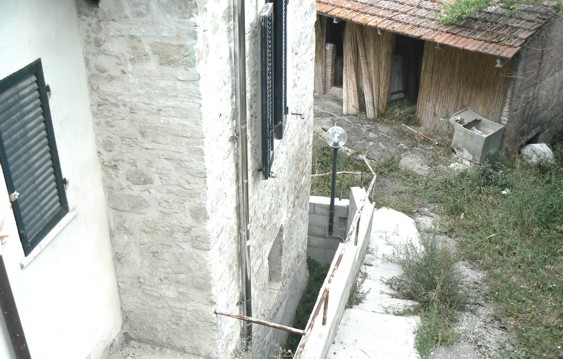
Sunday, October 06, 2013
Dr Mignini Pushes Back Against His Demonizers Trying To Ascribe Non-Existant “Satanic Theory”
Posted by Peter Quennell
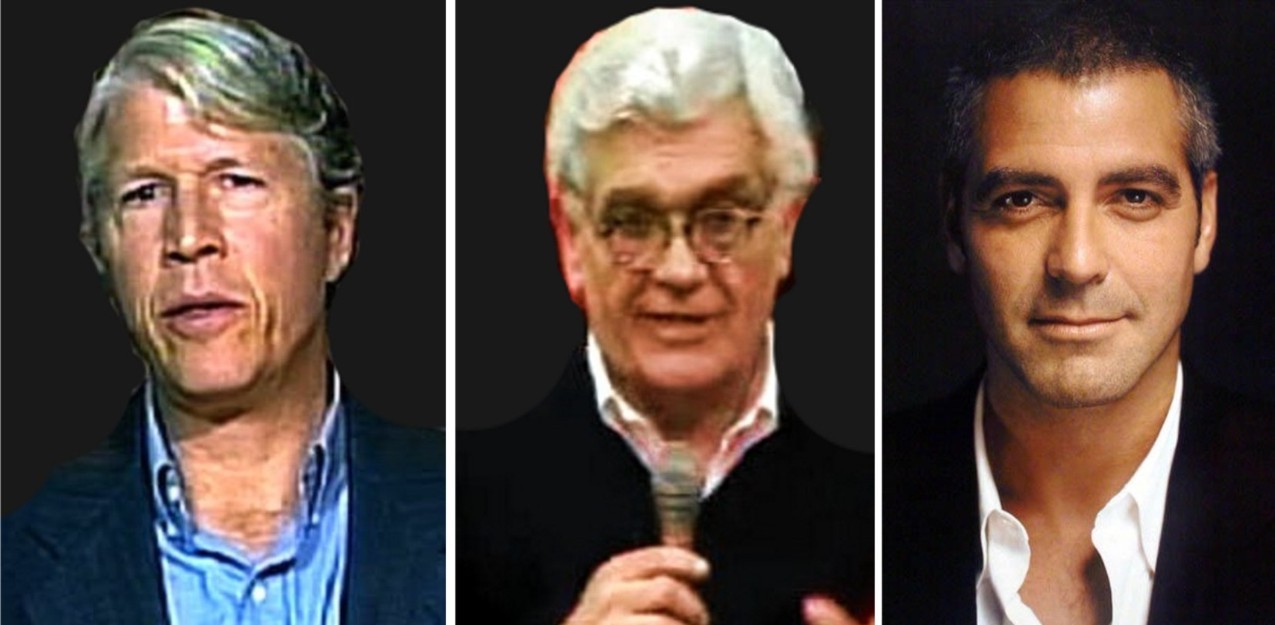
[Preston left, Spezi center, and George Clooney who is at legal risk for his option on their defamatory book]
1. Dr Mignini’s Published Statement
To the editor of Florence Corriere
Dear Director,
I am Giuliano Mignini, the magistrate who performed the investigation and trials of first instance and appeal in Perugia against the people accused of the murder of Meredith Kercher, as well as the investigation into the death of Francesco Narducci linked to the one performed by the Florence Prosecution Office in relation to the masterminds of the “Monster of Florence” murders.
I saw reported the interview that the journalist Mario Spezi ““ a person accused in the Narducci case ““ did with Amanda Knox, a main defendant in the appeal trial that will start today ““ published in the Corriere Fiorentino on Sep. 29.
In two recent cases the Court of Cassation has annulled verdicts, which acquitted Knox and Sollecito, and which decided [by Judge Micheli] a dropping of charge against Spezi (the parts regarding “˜lack of certainty about malice’ were annulled too).Therefore I don’t need to add anything further on that point. Instead, I need to point out the falsehood of an assertion which Mr. Spezi makes at the beginning of his article, as he tries to explain the reason for a link which, in his opinion, allegedly exists between the two cases, the one related to the Monster murders and Narducci’s death, and the one about the Kercher murder.
Mr. Spezi’s text says: “”¦ a strangely similar background, for two different cases, behind which the magistrate thought he could see satanic orgies on the occasion of Halloween for Amanda, and ritual blood sacrifices as a worship to the Devil in the Monster of Florence case”¦”.
This is an assertion that Mr. Spezi and crime-fiction author Douglas Preston have been repeating for years, but does not find the smallest confirmation in the documentation of the two trials, nor in the scenario put forward by the prosecution in which the Meredith murder (which didn’t happen on Halloween but on the subsequent night) was the consequence of a sex hazing to which Meredith herself did not intend to take part, and, above all, it was the consequence of a climate of hostility which built up progressively between the Coulsdon girl and Amanda because of their different habits, and because of Meredith’s suspicion about alleged money thefts by Knox.
Furthermore the object of the proceedings in the Narducci case is the scenario about the murder of the same Narducci and the attempt, by the doctor’s father and brother, to conceal the cause of his violent death, and this included the background within which the event ““ which was a homicide in my opinion and in the opinion of my technical consultant, coroner Prof. Giovanni Pierucci of the University of Pavia ““ had developed and taken place.
I had already denied several time assertions of such kind, but Mr. Spezi and Mr. Preston, and some people connected to them, go on repeating a lie, apparently hoping that it will become true by repeating it.
Another astonishing fact is that, despite that I was the prosecutor in the Kercher trial together with my colleague Manuela Comodi and then subsequently with my colleague Giancarlo Costagliola [at annulled apeal], and despite that I limited myself to formulating judicial requests which were all agreed to by a multitude of judges and confirmed by the Supreme Court, I am still considered as the only one responsible for an accusation against Ms. Knox and Mr. Sollecito, by twisting its content in various ways.
In the Narducci case, in the same way, I simply limited myself to performing the investigation and requesting the remands to trial, and the trial will have to start again now because the Supreme Court has annulled the dropping of charges [by Judge Micheli] and sent back the trial to another preliminary judge in Perugia.
The purpose ““ quite overt ““ of such endlessly repeated lies, is to defame the investigator, picturing him as a magistrate who is following alleged personal obsessions rather than sticking at facts, as instead he is.
The hope that such conscious misrepresentation of reality could bring advantage to the defences (foremost that of Spezi himself) is consistent with a bad habit which has all along flourished in Italy but is now also copied abroad.
Therefore I ask you to please publish my rectification against false and seriously defamatory information.
Kind regards
Giuliano Mignini
2. Context: The Mafia Playbook Adherents
As we have often d previously, the mafia and their handmaidens strive constantly to bring the Italian justice system down a peg or two.
When not using dynamite, as they often did in the past, they especially favor the weapon of character assassination of witnesses, judges prosecutors and police.
The vilification campaign being run in the United States by David Marriott, Chris Mellas, Doug Preston, Bruce Fischer, Steve Moore, Michelle Moore, Nigel Scott, and David Anderson (and from Italy by Frank Sforza) seems to be right out of the mafia playbook, whether all of them know it or not.
How the mafia have been using the public relations campaign to their own advantage seems set to emerge further in at least five of the associated trials coming down the pike: those of Luciano Aviello, Frank Sforza, Mario Spezi, Raffaele Sollecito (his book trial) and Amanda Knox (her book trial).
And now Mario Spezi, obviously a real glutton for punishment, once again piles on. Spezi has had incessant run-ins with the Italian law - and now he seems to have entered some kind of self-immolation end-game.
With Doug Preston, Spezi published several editions of their Monster of Florence scenario. These are widely discredited in Italy, not least because they are such obvious attempts to apply lipstick to a pig (half of the text is about an obviously red-handed and very very scared Preston trying to prove he did not actually melt down under interrogation for his probable felony interference in a case.)
Spezi has been charged with interfering with and hampering both the Monster of Florence investigations and the related investigation (which involved Dr Mignini) into the Narducci drowning - a clear murder (the body was found bound and another substituted) though a nefarious group worked very hard to deny that. (They were all charged as well, and the Supreme Court has recently confirmed the correctness of that.)
In recent weeks the Supreme Court has given a firm order for both prosecutions against Spezi to go ahead. How Spezi stays out of prison if he is found guilty is anyone’s guess. Doug Preston came up with a calamity of an explanation for the arrest of Frank Sforza for domestic violence, but presumably his assistance wont be sought this time around.
So in face of impending prison Spezi really watches his tongue, right?
No, in fact in a move bizarre even by his own standards, Spezi on 29 September published a surreal “interview” with Amanda Knox in Florence Corriere. It once again repeats the felony claim that the prosecution charged Knox and Sollecito in the first place based only on some “satanic theory”.
The Perugia prosecution has never never NEVER claimed that. The Florence prosecutor has already moved into felony-investigation mode (this could cost Spezi more years in prison) and on 3 October Florence Corriere published this correction below by the defamed prosecution (translation is by Yummi).
This unequivocal statement (far from the first but the most prominent) has its own legal status. It is a clear legal warning to the likes of Chris Mellas and Bruce Fischer that if they sustain the libel they are at risk of felony charges also.
The statement has already had a strong ripple effect in Italy. Many former allies - some of them not very savory - now feel that Spezi has lied to and betrayed them for his own ends.


